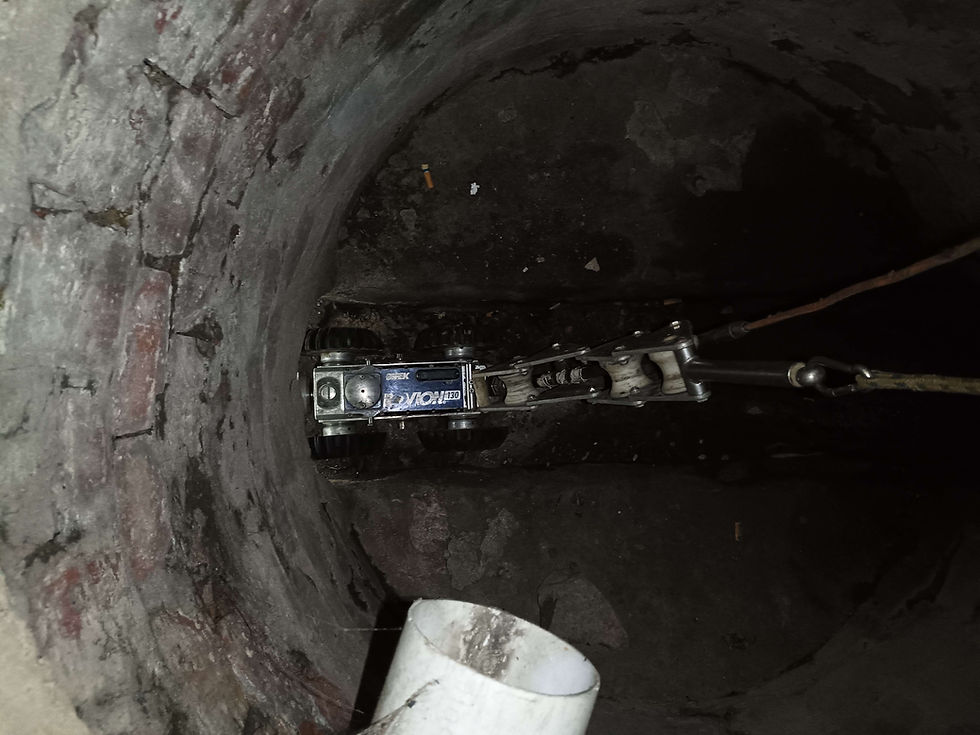The Role of IT in Enhancing Water and Waste Management Systems
- Camjet Pty Ltd
- Oct 15, 2024
- 3 min read
As the global demand for water and efficient waste management grows, innovative IT solutions are becoming essential for optimizing these critical systems. Through advanced technologies such as Geographic Information Systems (GIS), remote monitoring, and data analytics, IT enhances real-time decision-making and predictive maintenance.

For instance, companies like Camjet use IT to conduct pipeline inspections, GIS mapping, CCTV Inspections and infrastructure asset management, ensuring more effective resource management and reducing environmental impact. By integrating IT in water and waste management, companies can achieve greater efficiency, minimize water loss, and promote sustainability in infrastructure maintenance.
IT Solutions Revolutionizing Water and Waste Management

CCTV Camera Surveys for Wastewater and Drainage Systems
CCTV camera surveys are an important IT solution used in the inspection and maintenance of water and waste management systems. They offer several advantages, particularly in monitoring underground sewage and drainage systems, which are difficult to access and inspect manually.
Identification of Blockages and Structural Issues
CCTV cameras are inserted into underground pipelines to capture video footage of the interior. This helps identify issues like blockages, leaks, structural damage, and corrosion. The footage is analyzed to prioritize maintenance and repairs, reducing the risk of sewer overflows and environmental contamination.
Preventive Maintenance
Through regular CCTV inspections, utility companies can detect early signs of wear and tear, allowing them to schedule preventive maintenance before problems escalate. This proactive approach minimizes costly emergency repairs and improves system reliability.
Integration with AI and Machine Learning
Modern CCTV systems are integrated with AI algorithms that automatically detect anomalies such as cracks or blockages in pipelines. Machine learning can also predict future failures based on historical data, enabling preemptive action.

CCTV Pipeline Inspections
Advanced Analytics and Decision Support
One of the key contributions of IT to water and waste management is the use of advanced analytics to support decision-making. The vast amount of data collected from sensors, cameras, and other monitoring systems can be analyzed to uncover trends, optimize resource use, and forecast future demand.
Predictive Analytics
IT systems use predictive models to forecast water demand based on historical data, climate patterns, and population growth. Similarly, waste generation trends can be predicted, helping optimize waste collection, recycling efforts, and landfill usage.
GIS Mapping and Visualization
Geographic Information Systems (GIS) are used to map water and waste infrastructure, providing a clear view of the system’s layout and operational status. These maps help in identifying high-risk areas prone to leaks or blockages and support strategic planning for system upgrades.
Automation and Control Systems
Automation in water and waste management reduces the need for human intervention and increases operational efficiency. IT solutions such as SCADA (Supervisory Control and Data Acquisition) systems monitor and control various processes, from water treatment to waste processing.
SCADA Systems
SCADA systems gather real-time data from sensors and devices installed across the infrastructure and allow operators to monitor and control water treatment plants, wastewater facilities, and pipelines. Automated alarms can notify operators of critical issues like pressure drops, equipment failures, or contamination levels.
Automated Waste Sorting
In waste management, IT-driven automation technologies such as robotic sorting systems help improve the efficiency of recycling processes by separating waste types more accurately and quickly.
Water and Waste Management Through Cloud Platforms
Cloud computing has transformed the way water and waste management data is stored and accessed. Cloud platforms allow organizations to store vast amounts of data, access it remotely, and perform real-time analytics without requiring extensive physical infrastructure.
Cloud-Based Water Monitoring Systems
Utilities can use cloud platforms to manage water distribution, treatment, and billing systems. Data on water usage, system performance, and infrastructure health can be accessed from any location, enabling remote management and quicker decision-making.
Smart Waste Management Systems
Cloud solutions facilitate the integration of data from smart bins, collection trucks, and recycling facilities. This helps in centralizing the information needed to optimize waste collection routes and monitor the overall health of the waste management infrastructure.
Public Engagement and Awareness
IT also plays a role in educating the public about water conservation and proper waste management. Apps and digital platforms allow users to monitor their water usage and receive notifications on how to reduce consumption or dispose of waste responsibly.
Water Usage Apps
Smart water meters connected to apps help consumers monitor their usage patterns, detect leaks, and receive alerts when they surpass preset consumption limits. This helps foster water-saving habits.
Waste Disposal Apps
In waste management, mobile apps can guide users on how to properly sort recyclables, locate nearby disposal points, and schedule waste collection, reducing contamination in recycling streams.
IT has a profound impact on the management of water and waste systems, driving improvements in efficiency, reliability, and sustainability. CCTV camera surveys, smart sensors, data analytics, and cloud computing enable more precise monitoring, predictive maintenance, and optimized operations, making water and waste systems more resilient to future challenges. The integration of these technologies not only reduces operational costs but also contributes to environmental conservation and public health.

댓글